The Cornell Lab Bird Academy › Discussion Groups › Bird Photography with Melissa Groo › Practice Crafting Great Bird Photos
-
Bird AcademyBird AcademyWhat did you notice when you followed (or broke!) the “rules” of composition? Share in the discussion below.You must be enrolled in the course to reply to this topic.
-
 I think this is more along the lines of the classic image with the front lighting and the creamy background. I think the Osprey could use a little more space around it, so maybe I will try to re-edit... but I placed the eye essentially via rule of thirds.
I think this is more along the lines of the classic image with the front lighting and the creamy background. I think the Osprey could use a little more space around it, so maybe I will try to re-edit... but I placed the eye essentially via rule of thirds. -
In this photo of the Eurasian Magpie, I tried to use the rule of thirds, but at the same time show the alignment of the bird's tail with the branches. I realized afterwards that it would be better to use the camera's grid pattern to take the photo to following the rule of thirds.

-
Hey everyone, when I tried taking photos keeping both the elements of compositions with the rules in mind, I think it resulted in better photos altogether especially if your bird is stationary, but when you are trying to take photos in the manual mode with lots of settings going on parallelly in your mind like the exposure trifecta, the focus mode, the position of the bird in the frame, etc. All of this makes you forget the rules cause the bird will suddenly appear and you are struggling with making your camera work in the right way and by the time you're ready with the camera, the bird flies away into a different light and then you have to change your settings again. Reply if you have the experienced the same problem. After having many tries at it, I did manage to get a few shots. The first picture is taken while following the rules and the second one is taken while breaking the rules. I think that photos with rules resulted in a decent perfect picture but in order to get creative and try out new angles to make it a unique photo we need to break the rules. Do share your opinion as well.


-
Took advantage of side lighting when shooting this House Finch in my yard one frosty morning. If I had taken the picture when he was turning the other way, I think there would have been a beautiful glint in his eye.

-
ISO
 ISO 640 f6.3 1/250 white-throated sparrow. Taken prior to viewing this section of the course, I know where I can improve now.
ISO 640 f6.3 1/250 white-throated sparrow. Taken prior to viewing this section of the course, I know where I can improve now. -

-
 American robin
American robin -
 Japanese white-eye
[500mm, f/6.3, 1/800, ISO1600, +1.67EV]
It's my first posting and thanks for your great course Melissa.
Japanese white-eye
[500mm, f/6.3, 1/800, ISO1600, +1.67EV]
It's my first posting and thanks for your great course Melissa. -
Amazing!! I can't seem to ever get close enough. Still working on that.
-
-
Quite often I cannot help but break with the rule of thirds. For example these ducks, mix of Ringed necks ducks with scalps (?), wigeon and gadwalls, are in a line on the lake. I took this image as evidence that they were part of the 2023 autumn migration through the city. Evidence and documentation are my primary goals with such an image. If I can manage a really nice photograph, such as those of real professionals, I am extremely happy and surprised. More successful with following the rule of thirds and of using the light, angle of view, and way of approach is this photograph of a Swainson's hawk. I had been watching the nest for several years. I knew what time they sort of did their search for food so I took my cameras and tripods to try to photograph them. This is one of the better portraits of a Swainson's hawk.


-


-
These look like my pictures, where the bird is a little out of focus. I am trying.
-
-
These two photos were shot in February when I favored square format and are part of my "post a bird daily" project that I started in January.
 This was shot using the rule of thirds. The image is full frame cropped to square. The birds eye and is 1/3 in from the lower left. The following shot was also originally rule of thirds.
This was shot using the rule of thirds. The image is full frame cropped to square. The birds eye and is 1/3 in from the lower left. The following shot was also originally rule of thirds.
 In the detail cropping the obscured eye looks at the viewer from dead center.
Both were shot at 600mm, F4, 1/1250, ISO Auto
In the detail cropping the obscured eye looks at the viewer from dead center.
Both were shot at 600mm, F4, 1/1250, ISO Auto -
Those are both really beautiful.
-
-


-
Although the image is not sharp, I like how the shallow background highlights the bird's color and shape. Will keep playing with it. Thank you so much for the lessons!

-
 I liked the back lighting and the juxtaposition of tangled branches from where he/she was coming and the "wild blue yonder" to where she/he was going.
I liked the back lighting and the juxtaposition of tangled branches from where he/she was coming and the "wild blue yonder" to where she/he was going. -
A few examples of lighting...
 f5.6, 1/2000, ISO 400
f5.6, 1/2000, ISO 400
 f5.6, 1/640, ISO 800
f5.6, 1/640, ISO 800
 f5, 1/500, ISO 200
f5, 1/500, ISO 200 -

 These Clapper Rails were in a marsh on the coast of South Carolina. The top picture uses the rule of thirds but the bird is moving right on the right side of the frame. This is typical of how I see rails, always about to disappear. The bottom picture is an atypical portrait. It does not show the face of the bird but rather its tail as it slips into the marsh grass.
These Clapper Rails were in a marsh on the coast of South Carolina. The top picture uses the rule of thirds but the bird is moving right on the right side of the frame. This is typical of how I see rails, always about to disappear. The bottom picture is an atypical portrait. It does not show the face of the bird but rather its tail as it slips into the marsh grass. -
 This perch was near a bird feeder. The background was nicely blurred with an aperture of f5.6.
This perch was near a bird feeder. The background was nicely blurred with an aperture of f5.6. -
Hi Steve, I really love this shot. The perch itself is a wonderful color that ties the muted background to the foreground and sets a perfect spot for the cardinal, with a just right amount of contrast. Thanks for posting Steve.
-
-
The song sparrow was centered as portrait ,breaking rule of thirds and wide open aperture to blur out background.

-
The blurred background colors which match the green and magenta plant helped isolate and highlight this lesser goldfinch. Appreciated the catch light as well.

-
 I learned a lot about the importance of light, composition and background to accentuate my bird photos. I am using my photo of the black and white warbler to exemplify the law of thirds (though I now know it could also be used as an example of using a shallow depth of field), I see how it enhances the photo to include a sense of the setting/context in which the bird is in. I used the photo of the grackle on the dead branch to exemplify how a large depth of field can detract from the sheen and rich colors of the bird as the brilliant blue sky seems to compete and detract from the bird rather than enhance it. For an example of a shallow depth of field I think my song sparrow photo demonstrates how paying attention to your depth of field can really help illuminate your subject.
I learned a lot about the importance of light, composition and background to accentuate my bird photos. I am using my photo of the black and white warbler to exemplify the law of thirds (though I now know it could also be used as an example of using a shallow depth of field), I see how it enhances the photo to include a sense of the setting/context in which the bird is in. I used the photo of the grackle on the dead branch to exemplify how a large depth of field can detract from the sheen and rich colors of the bird as the brilliant blue sky seems to compete and detract from the bird rather than enhance it. For an example of a shallow depth of field I think my song sparrow photo demonstrates how paying attention to your depth of field can really help illuminate your subject. 

-
I’ve been mostly shooting in Shutter Priority mode to quickly adjust for fast- or slow-moving birds, so switching to Manual is a bit of a struggle for me! I also tried a different metering mode than I had before, so that might account for some of my difficulty in adjusting. The aperture exercise really highlighted for me the value of having a shallow depth of field. Not only does it help keep the attention focused on the bird, but by allowing lots of light in, it avoids having to compensate for low light by having the ISO increased, resulting in a grainy photo! (Which is what I ended up with at higher F stops.) For the rule of thirds exercise, I practiced on an Anna’s hummingbird. For a side view of the hummingbird, following the rule of thirds created a nice composition to include both the bird and its environment. For a view from the back, I favored a centered composition that emphasized the symmetry of the bird’s position, as well as the single pink iridescent feather on the back of its head. Both exercises were illuminating and certainly made me feel like I needed a lot more practice!


-
Both are very beautiful! Both are very successful compositions.
-
-
I usually like to shoot with the rule of thirds, but there are times that I think the image just looks better having the bird in the middle based on the birds position.


-
<i>In this shot, I used the rule of thirds but also thought that shooting the Chipping Sparrow from behind with its head slightly turned, made it more interesting.
 made it alittle mor</i>
made it alittle mor</i> -
In this image, I chose to almost fill the frame with the duck. I was standing on a small bridge, looking down on the bird. The surrounding water is blurred. I like this shot as it gives a very different perspective and also allowed me to focus on the feather pattern.

-
Wow! Fantastic! A very unique perspective, and the diagonal element of the composition enhances the abstract nature of the image.
-
Read More:
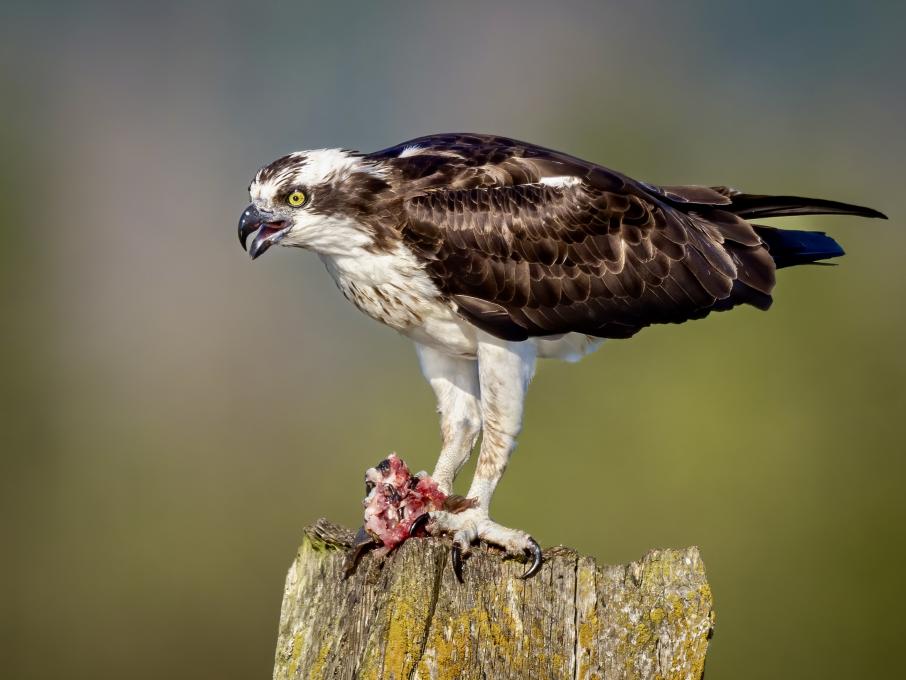 I think this is more along the lines of the classic image with the front lighting and the creamy background. I think the Osprey could use a little more space around it, so maybe I will try to re-edit... but I placed the eye essentially via rule of thirds.
I think this is more along the lines of the classic image with the front lighting and the creamy background. I think the Osprey could use a little more space around it, so maybe I will try to re-edit... but I placed the eye essentially via rule of thirds. 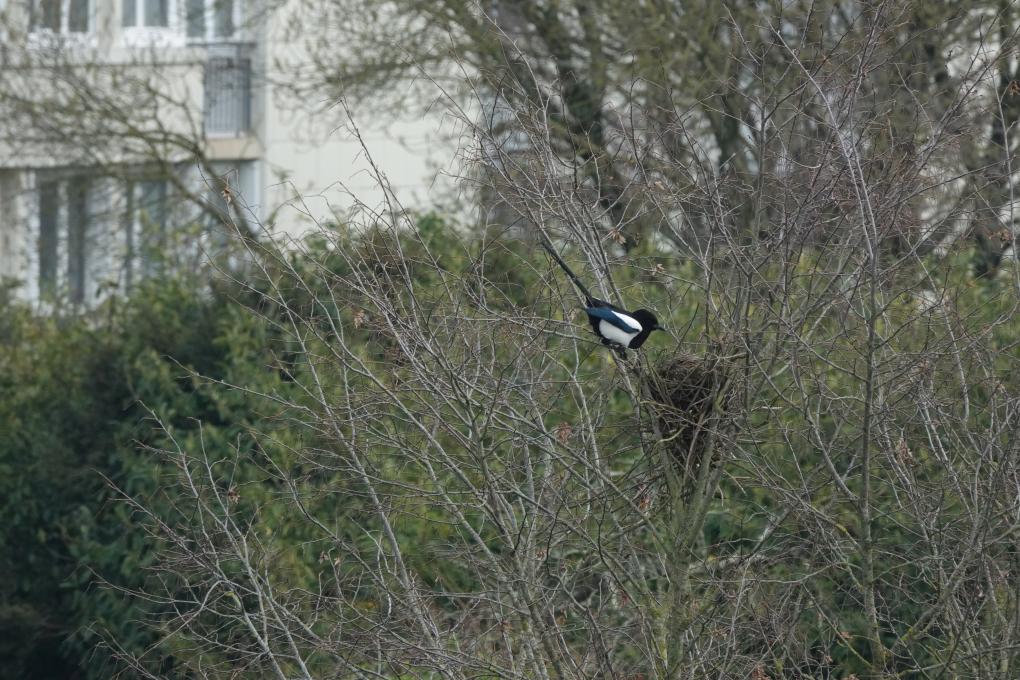
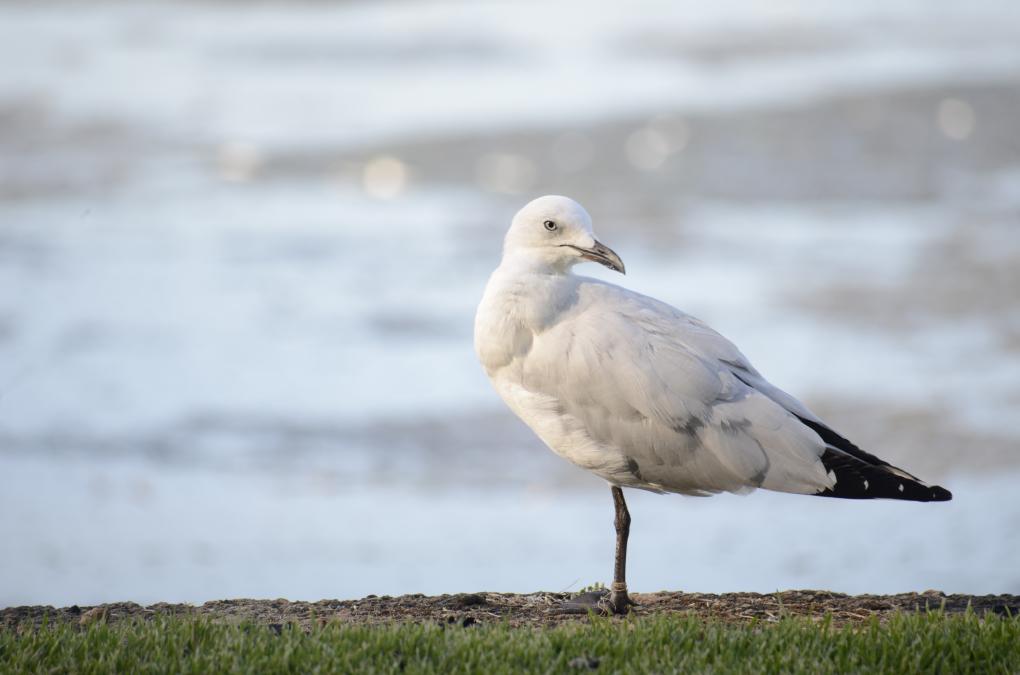
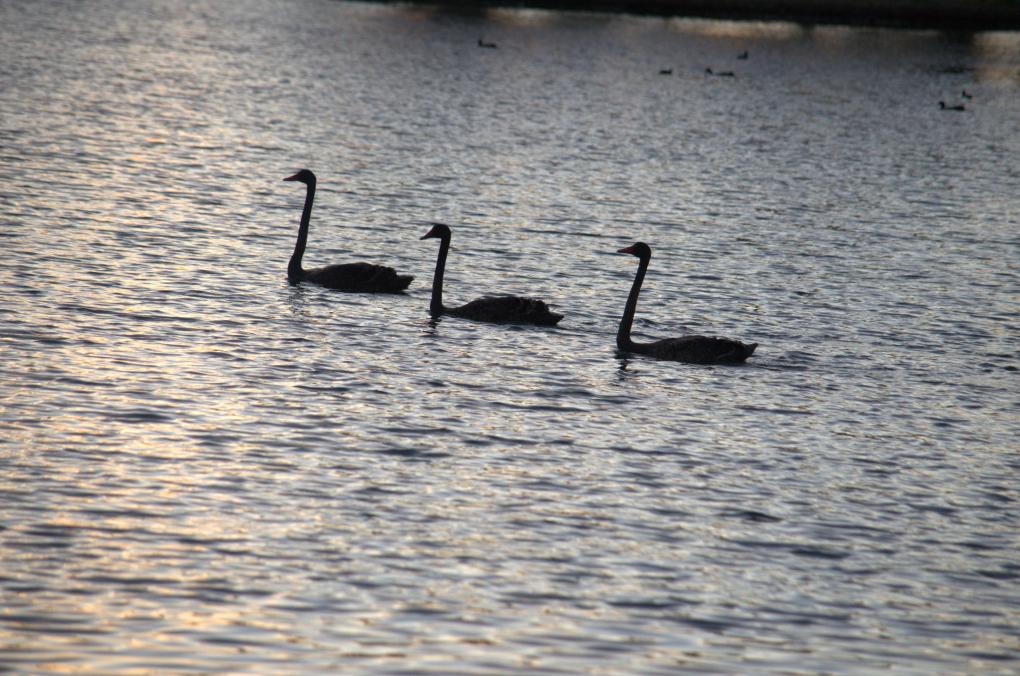
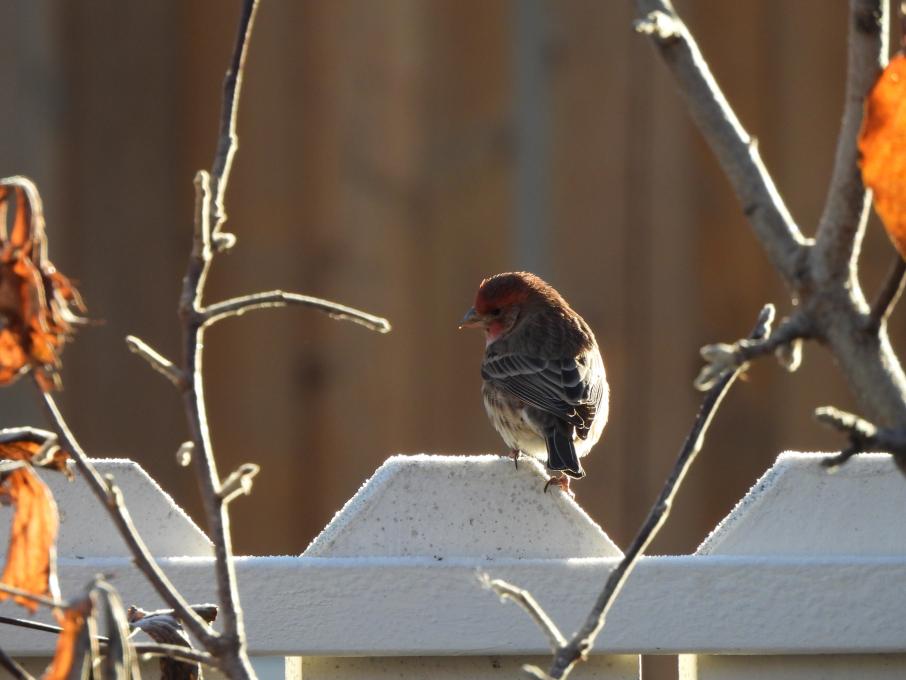
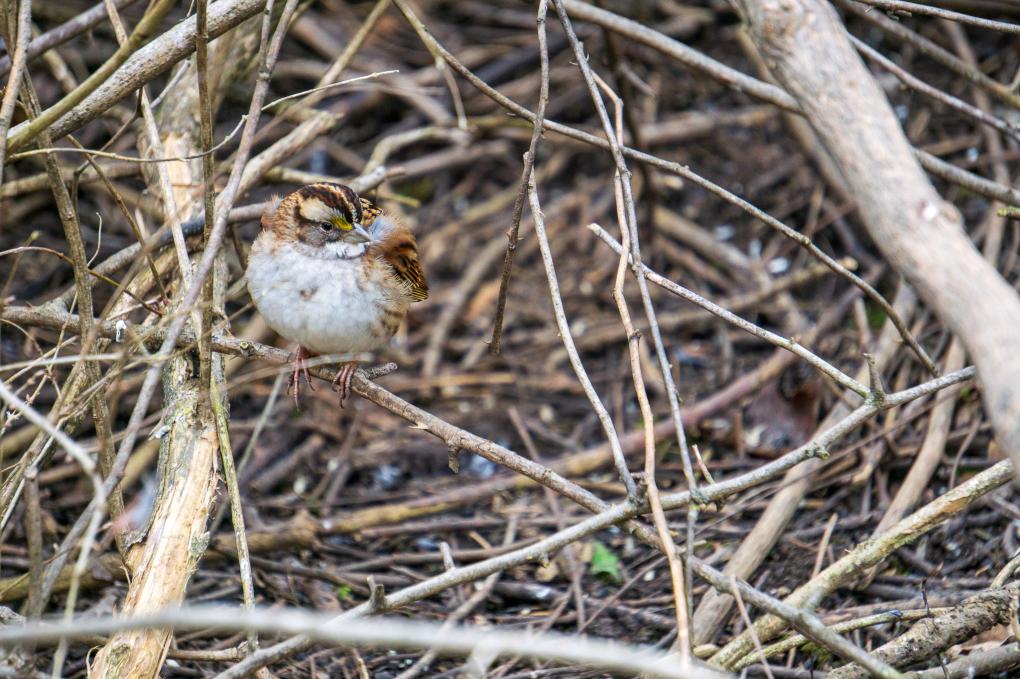 ISO 640 f6.3 1/250 white-throated sparrow. Taken prior to viewing this section of the course, I know where I can improve now.
ISO 640 f6.3 1/250 white-throated sparrow. Taken prior to viewing this section of the course, I know where I can improve now. 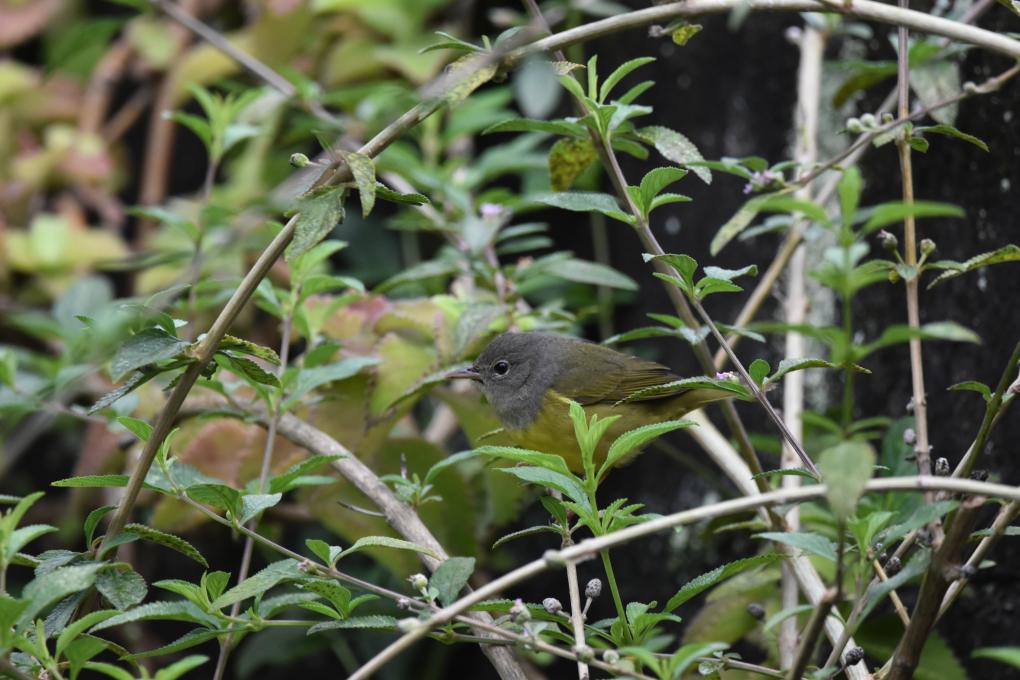
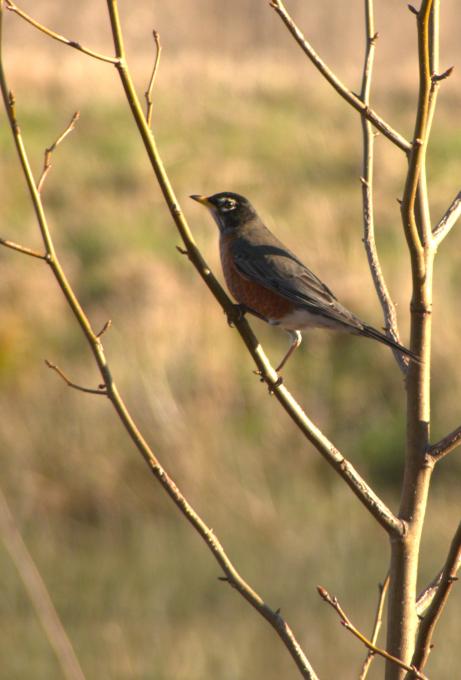 American robin
American robin 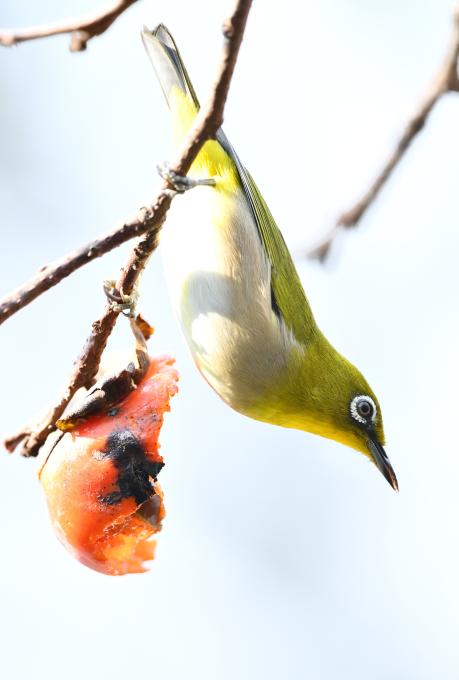 Japanese white-eye
[500mm, f/6.3, 1/800, ISO1600, +1.67EV]
It's my first posting and thanks for your great course Melissa.
Japanese white-eye
[500mm, f/6.3, 1/800, ISO1600, +1.67EV]
It's my first posting and thanks for your great course Melissa. 
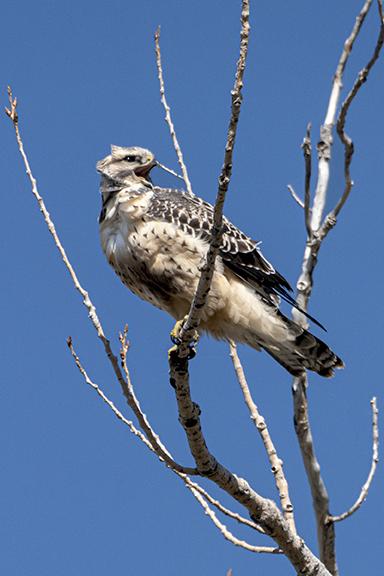
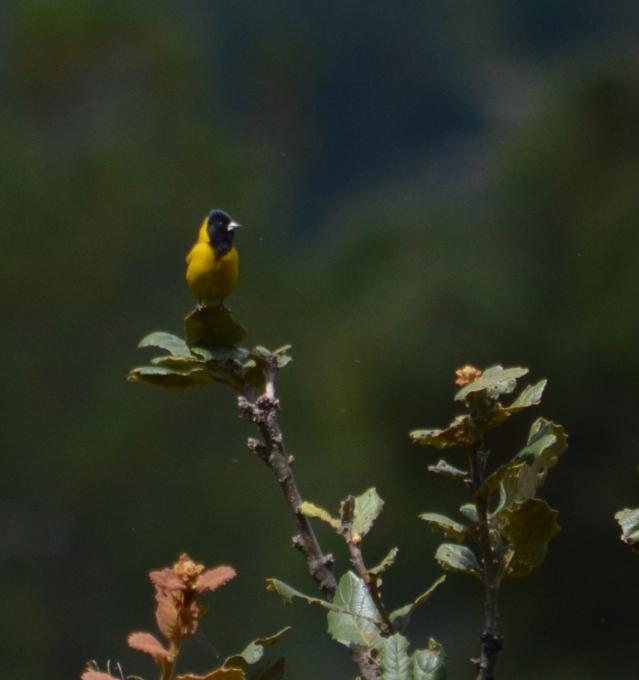
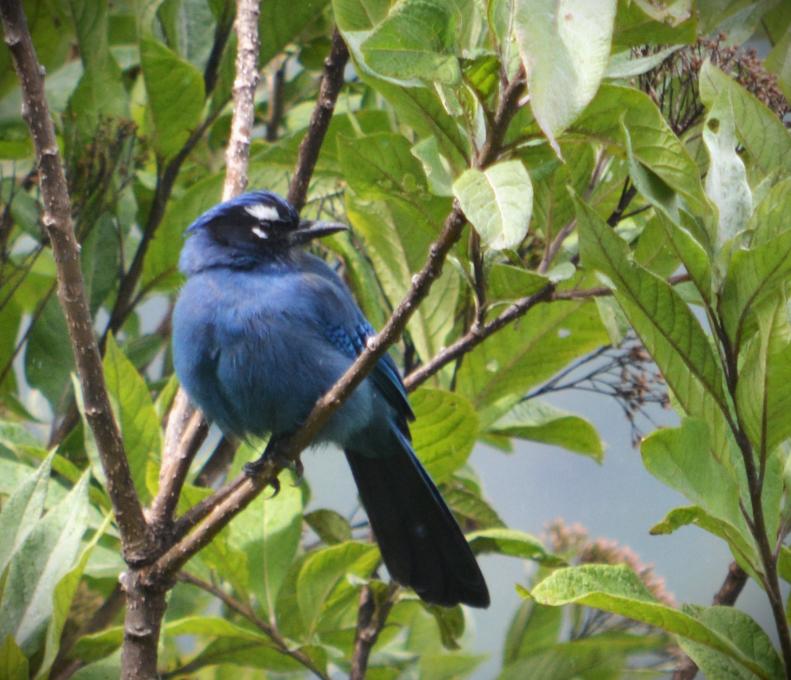
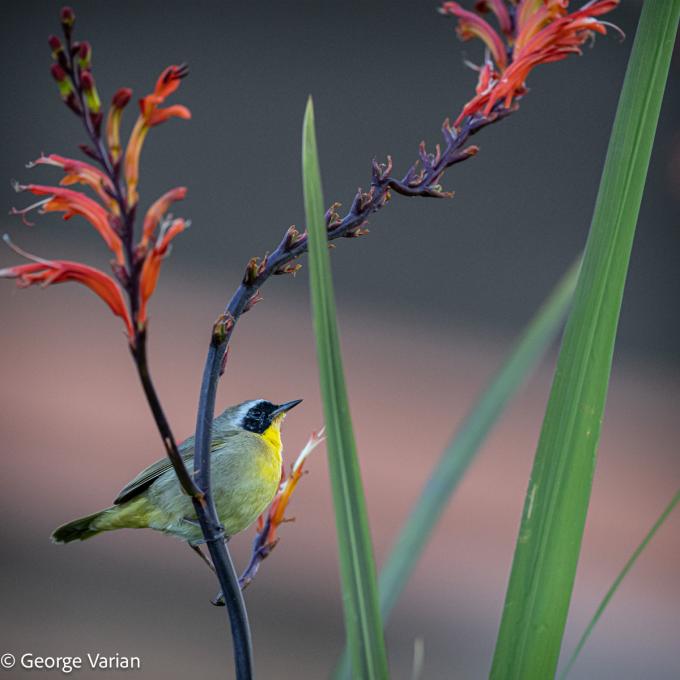 This was shot using the rule of thirds. The image is full frame cropped to square. The birds eye and is 1/3 in from the lower left. The following shot was also originally rule of thirds.
This was shot using the rule of thirds. The image is full frame cropped to square. The birds eye and is 1/3 in from the lower left. The following shot was also originally rule of thirds.
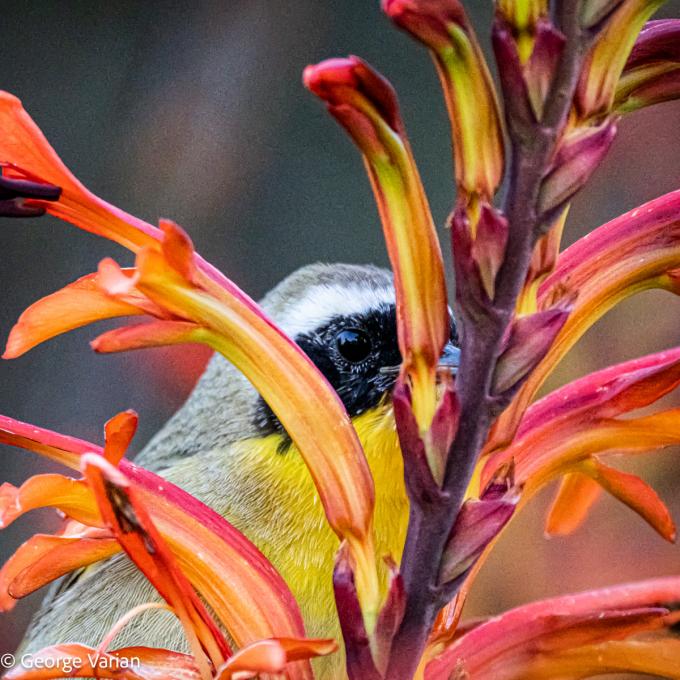 In the detail cropping the obscured eye looks at the viewer from dead center.
Both were shot at 600mm, F4, 1/1250, ISO Auto
In the detail cropping the obscured eye looks at the viewer from dead center.
Both were shot at 600mm, F4, 1/1250, ISO Auto 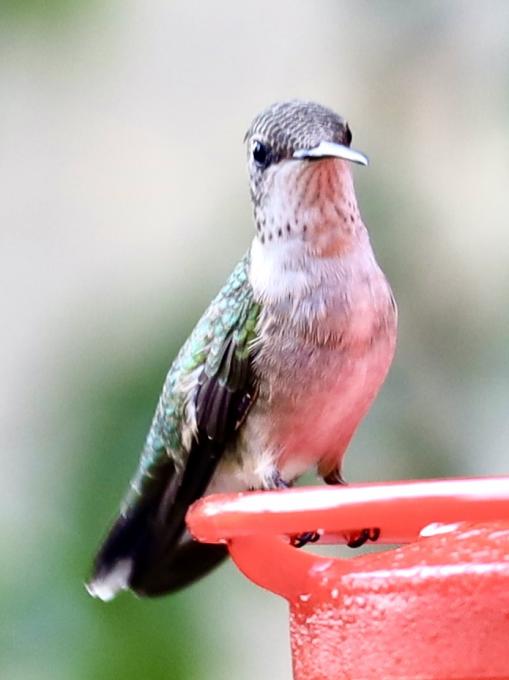
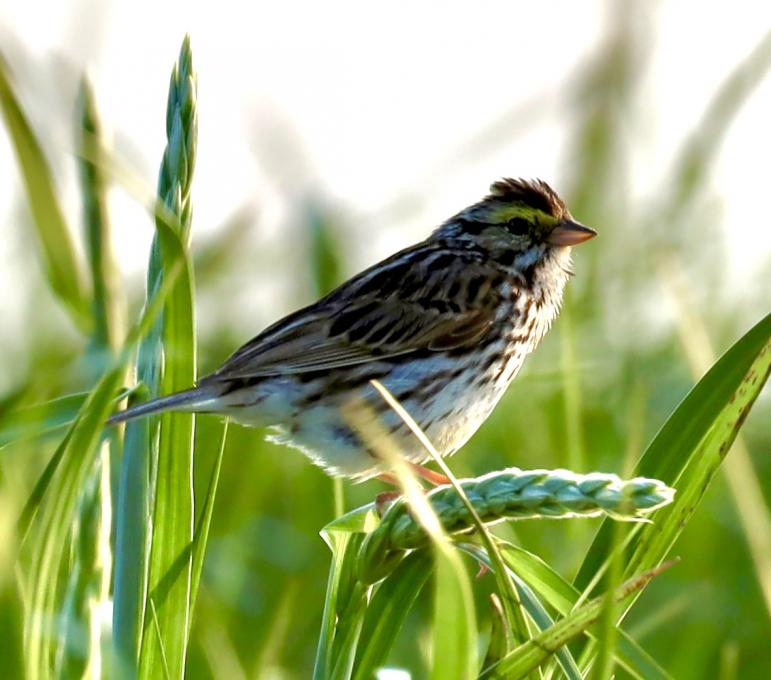
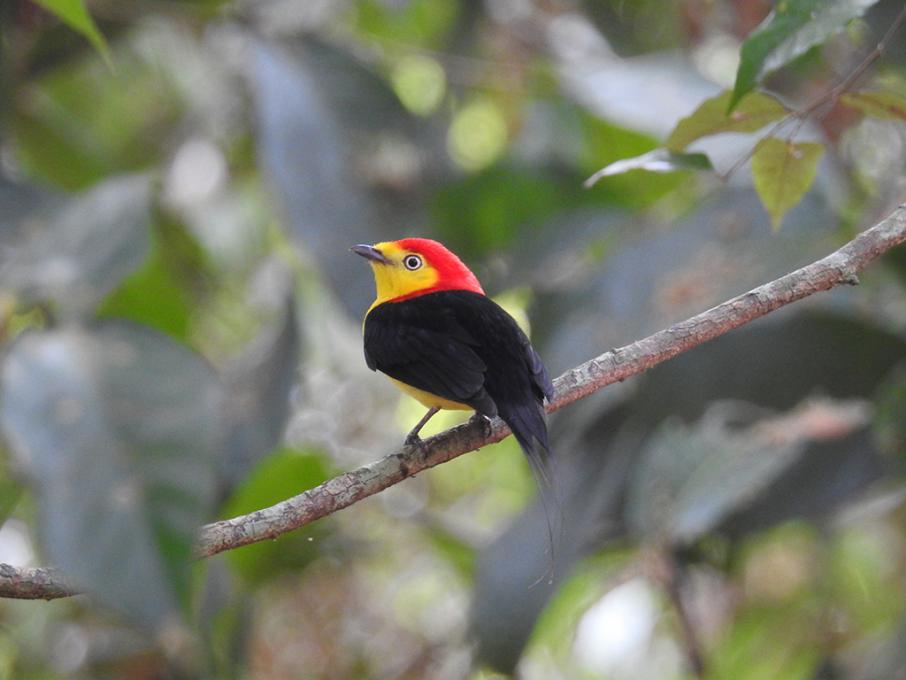
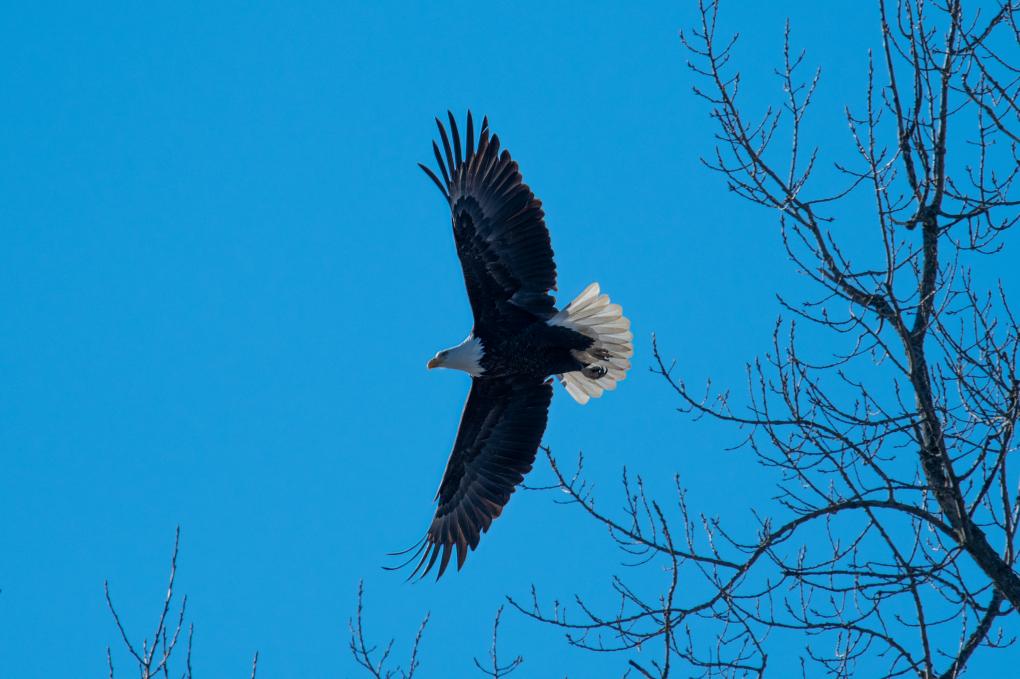 I liked the back lighting and the juxtaposition of tangled branches from where he/she was coming and the "wild blue yonder" to where she/he was going.
I liked the back lighting and the juxtaposition of tangled branches from where he/she was coming and the "wild blue yonder" to where she/he was going. 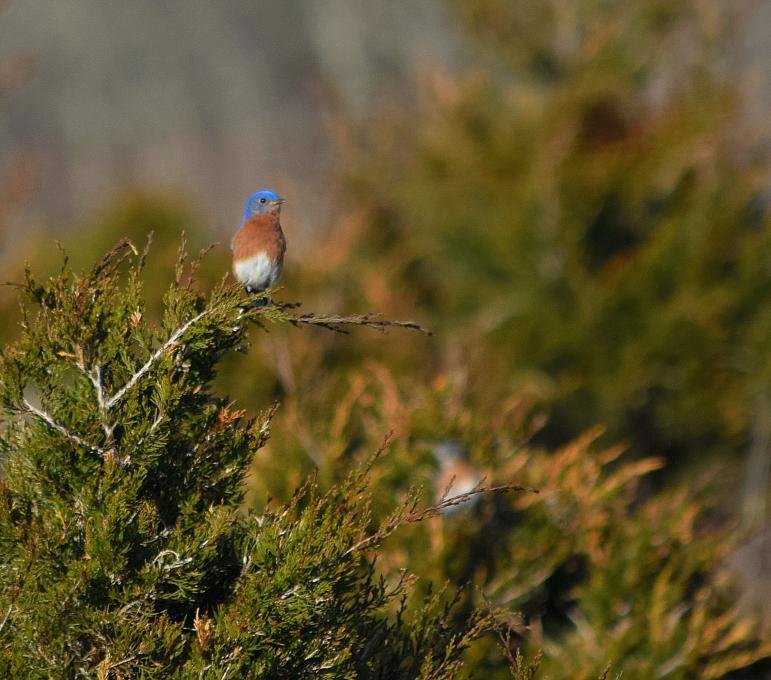 f5.6, 1/2000, ISO 400
f5.6, 1/2000, ISO 400
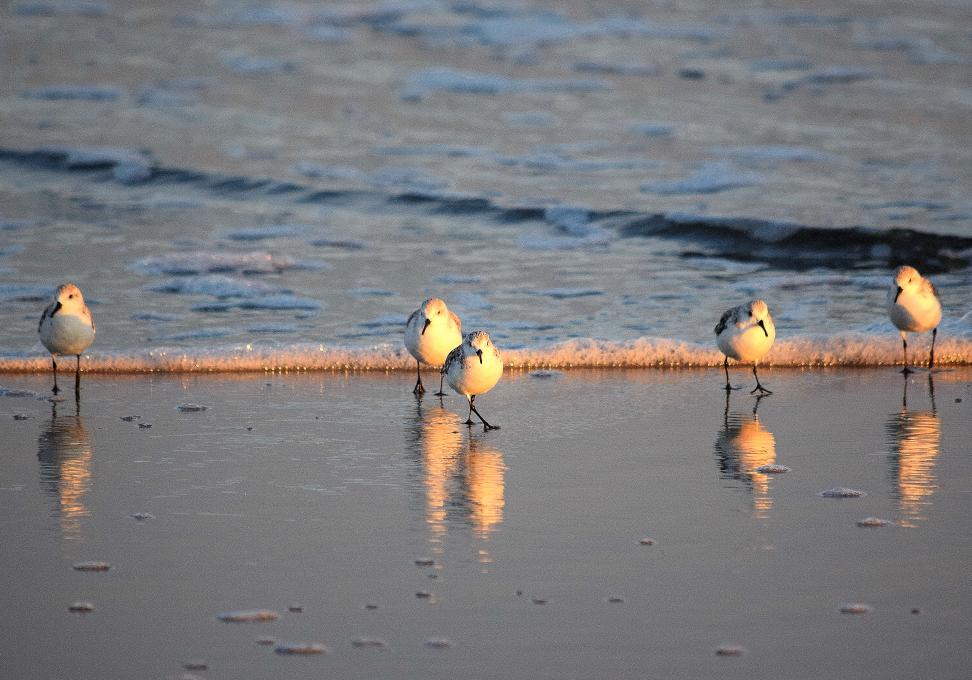 f5.6, 1/640, ISO 800
f5.6, 1/640, ISO 800
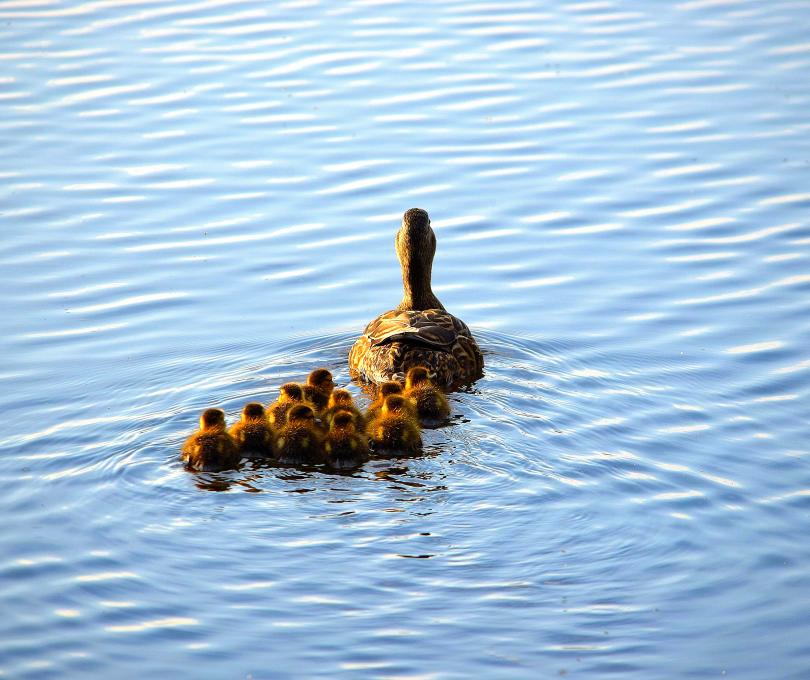 f5, 1/500, ISO 200
f5, 1/500, ISO 200 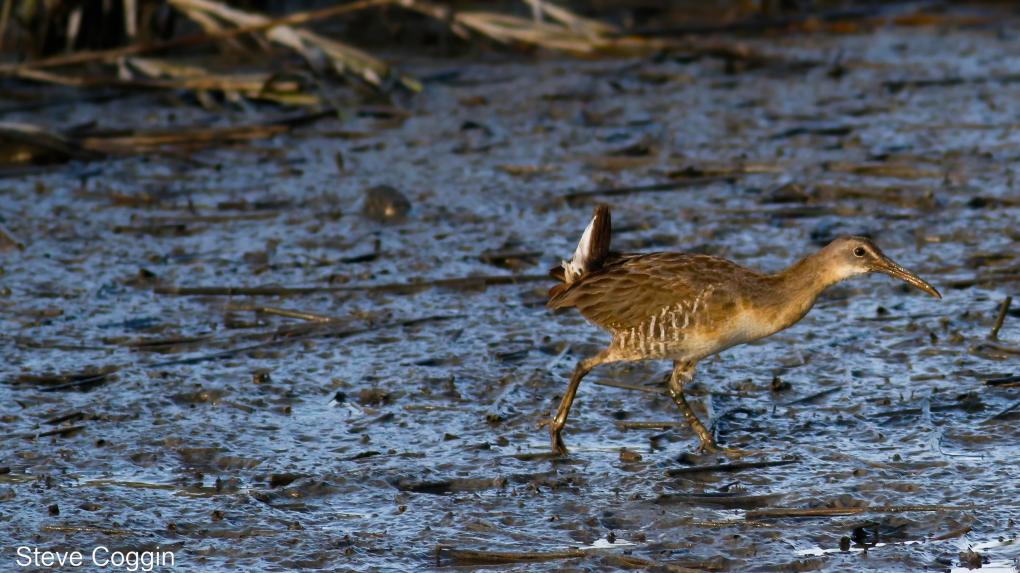
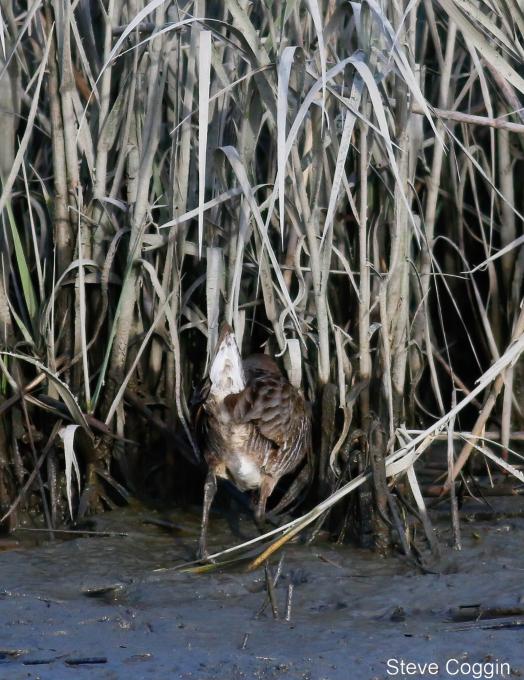 These Clapper Rails were in a marsh on the coast of South Carolina. The top picture uses the rule of thirds but the bird is moving right on the right side of the frame. This is typical of how I see rails, always about to disappear. The bottom picture is an atypical portrait. It does not show the face of the bird but rather its tail as it slips into the marsh grass.
These Clapper Rails were in a marsh on the coast of South Carolina. The top picture uses the rule of thirds but the bird is moving right on the right side of the frame. This is typical of how I see rails, always about to disappear. The bottom picture is an atypical portrait. It does not show the face of the bird but rather its tail as it slips into the marsh grass. 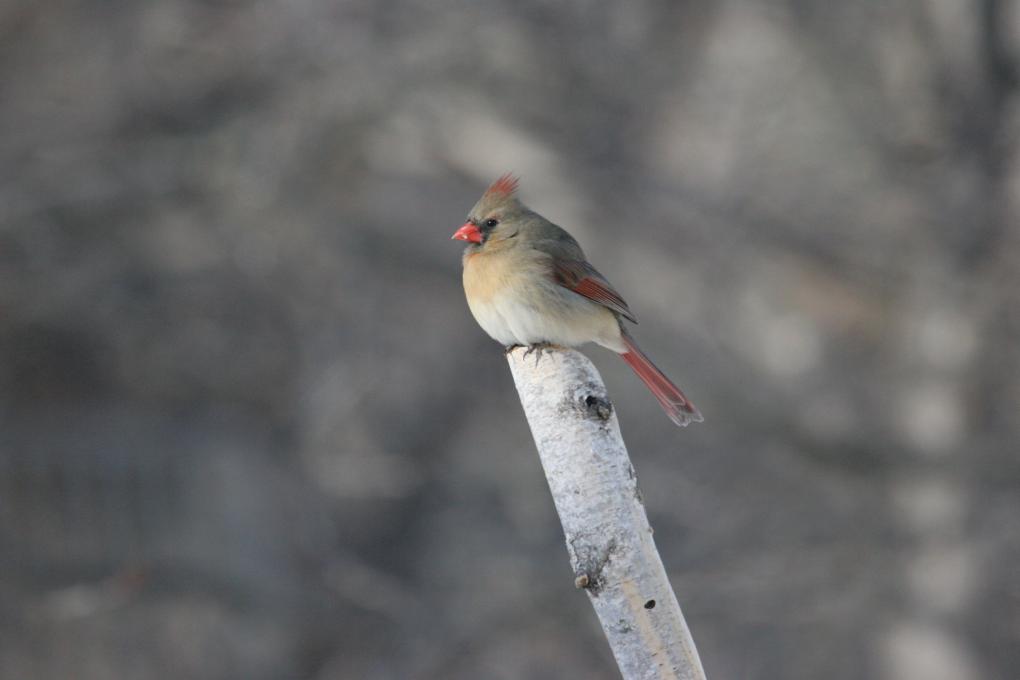 This perch was near a bird feeder. The background was nicely blurred with an aperture of f5.6.
This perch was near a bird feeder. The background was nicely blurred with an aperture of f5.6. 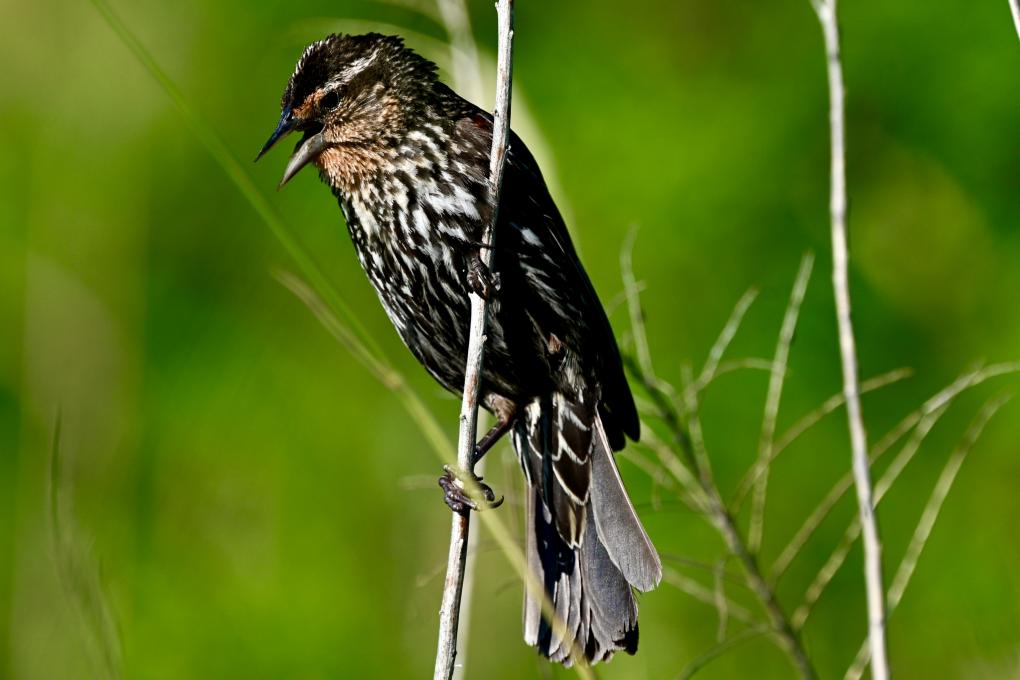
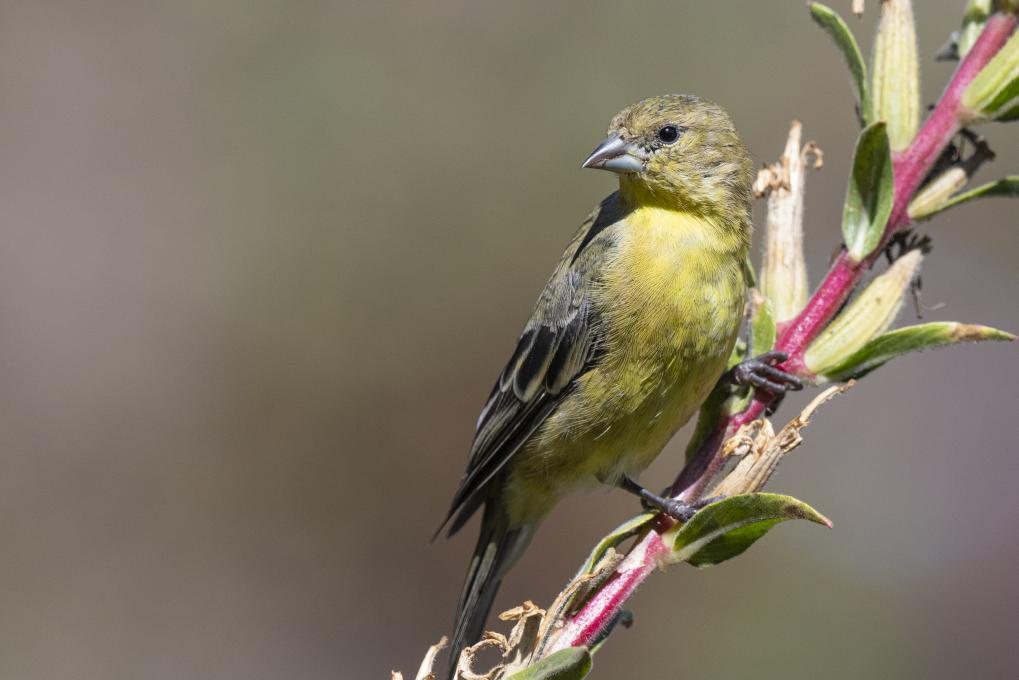
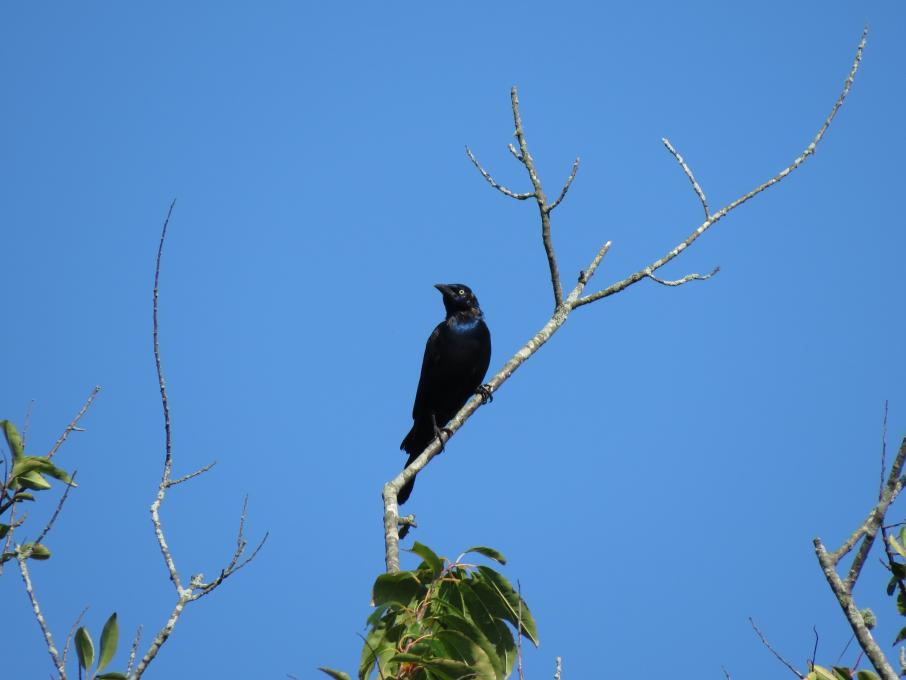 I learned a lot about the importance of light, composition and background to accentuate my bird photos. I am using my photo of the black and white warbler to exemplify the law of thirds (though I now know it could also be used as an example of using a shallow depth of field), I see how it enhances the photo to include a sense of the setting/context in which the bird is in. I used the photo of the grackle on the dead branch to exemplify how a large depth of field can detract from the sheen and rich colors of the bird as the brilliant blue sky seems to compete and detract from the bird rather than enhance it. For an example of a shallow depth of field I think my song sparrow photo demonstrates how paying attention to your depth of field can really help illuminate your subject.
I learned a lot about the importance of light, composition and background to accentuate my bird photos. I am using my photo of the black and white warbler to exemplify the law of thirds (though I now know it could also be used as an example of using a shallow depth of field), I see how it enhances the photo to include a sense of the setting/context in which the bird is in. I used the photo of the grackle on the dead branch to exemplify how a large depth of field can detract from the sheen and rich colors of the bird as the brilliant blue sky seems to compete and detract from the bird rather than enhance it. For an example of a shallow depth of field I think my song sparrow photo demonstrates how paying attention to your depth of field can really help illuminate your subject. 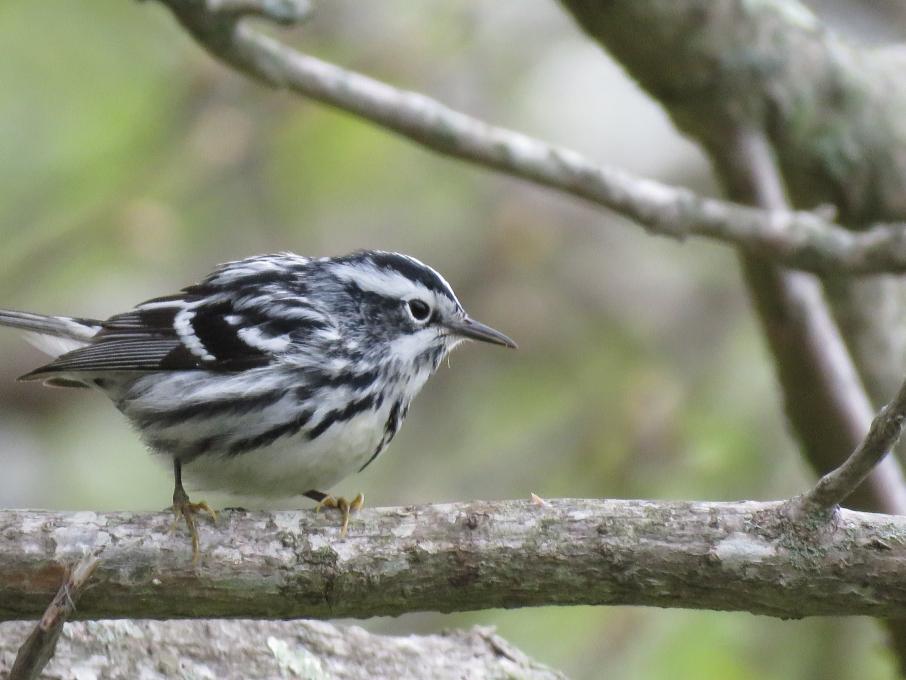
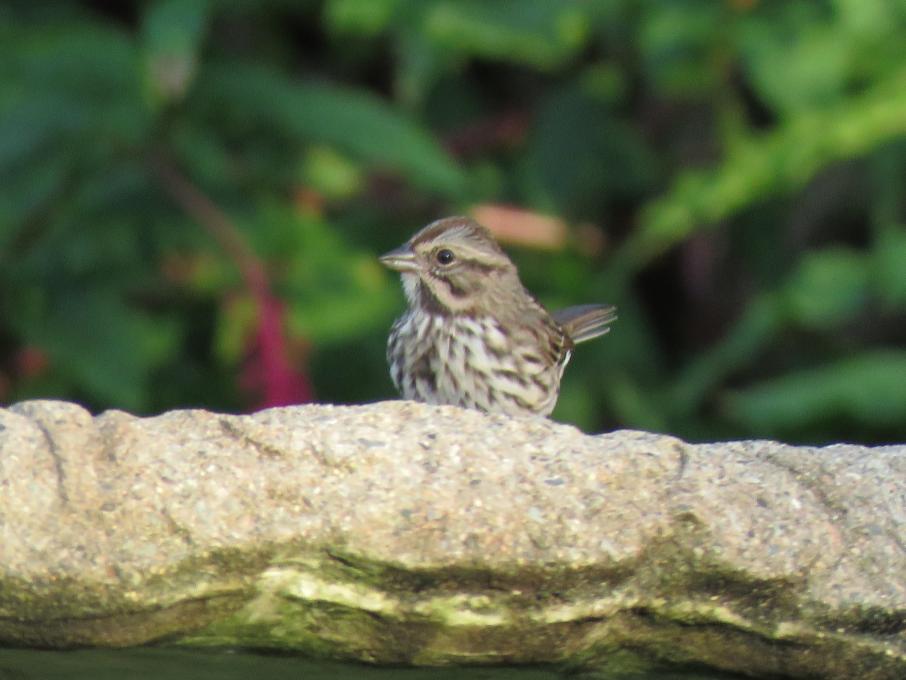
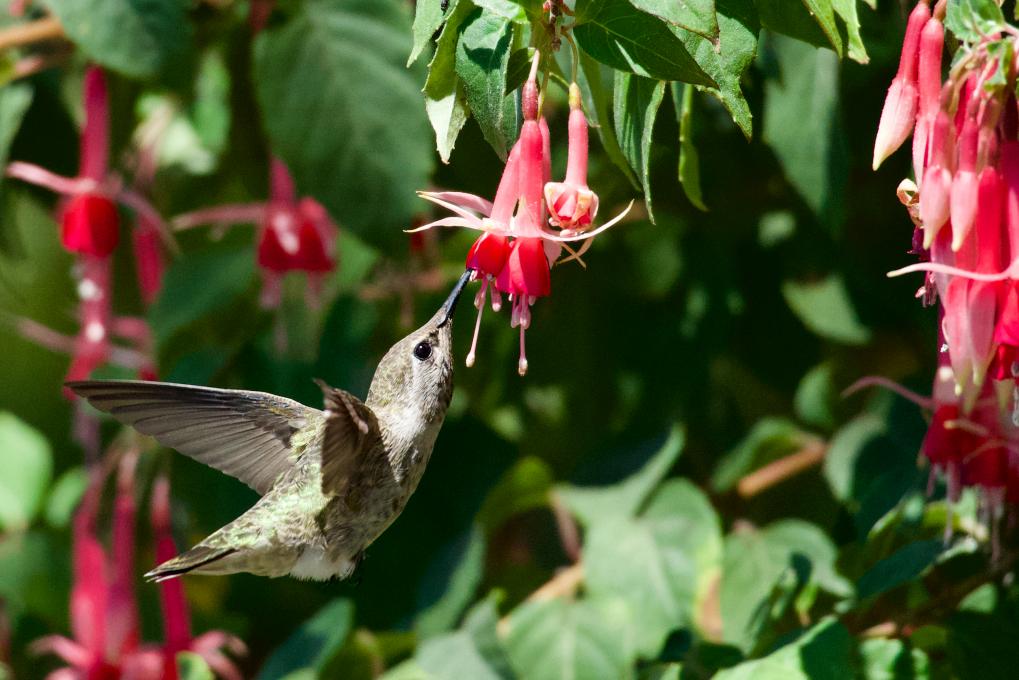
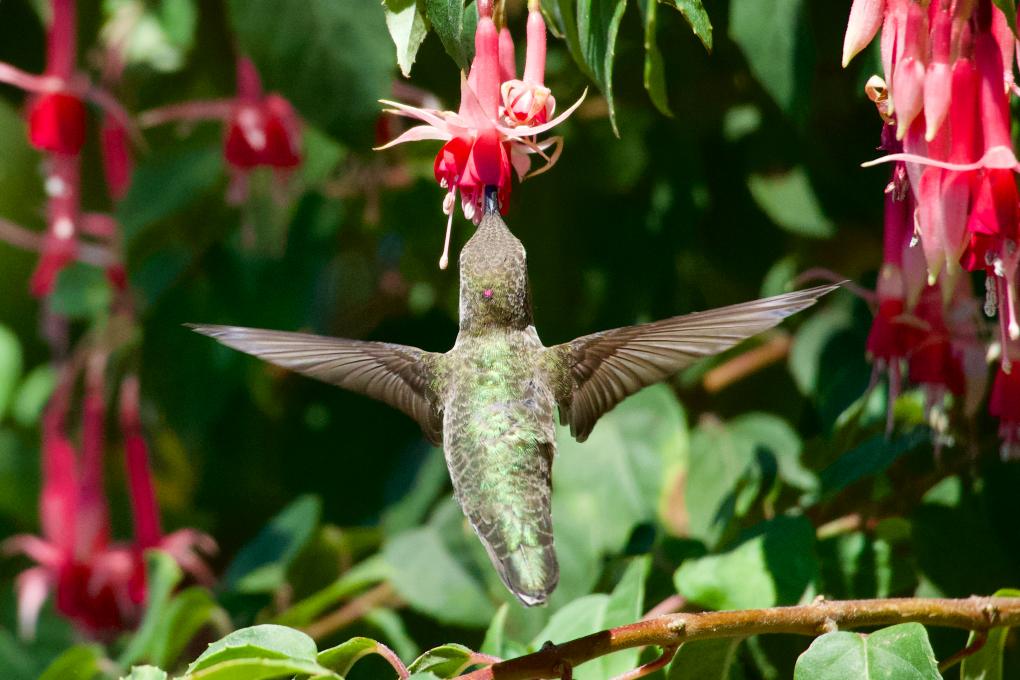
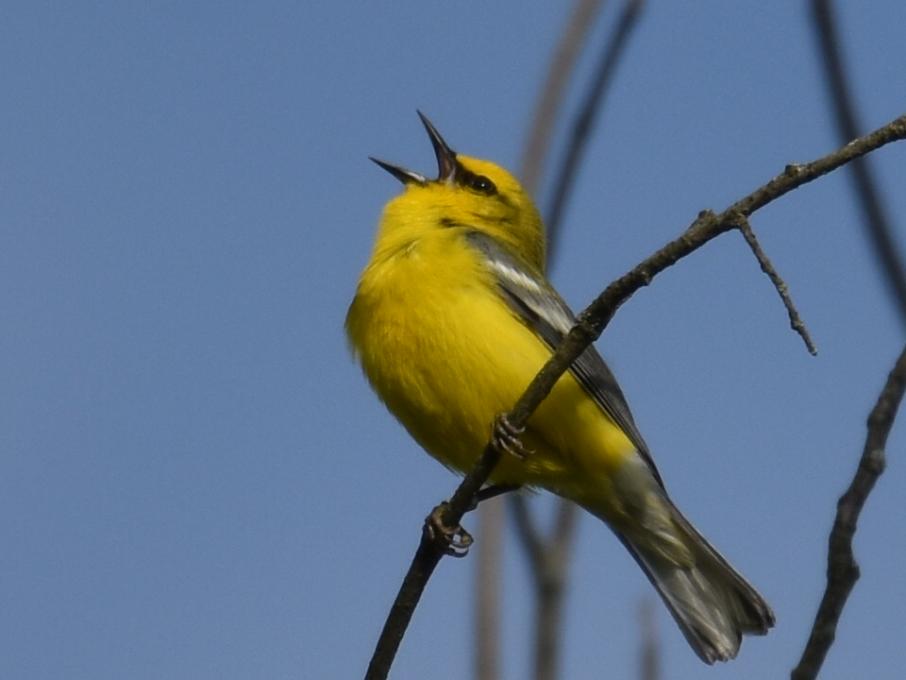
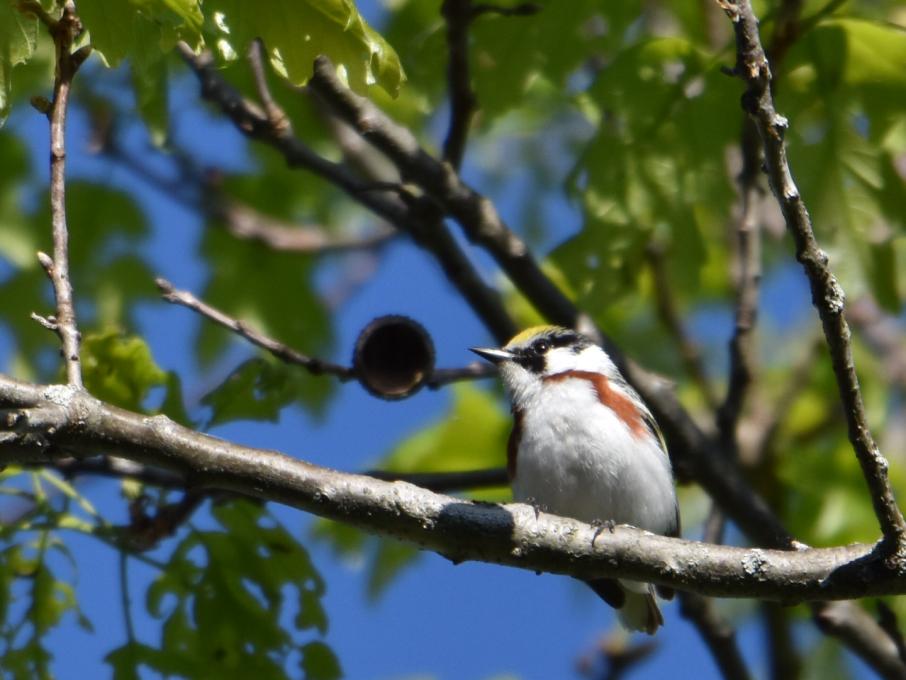
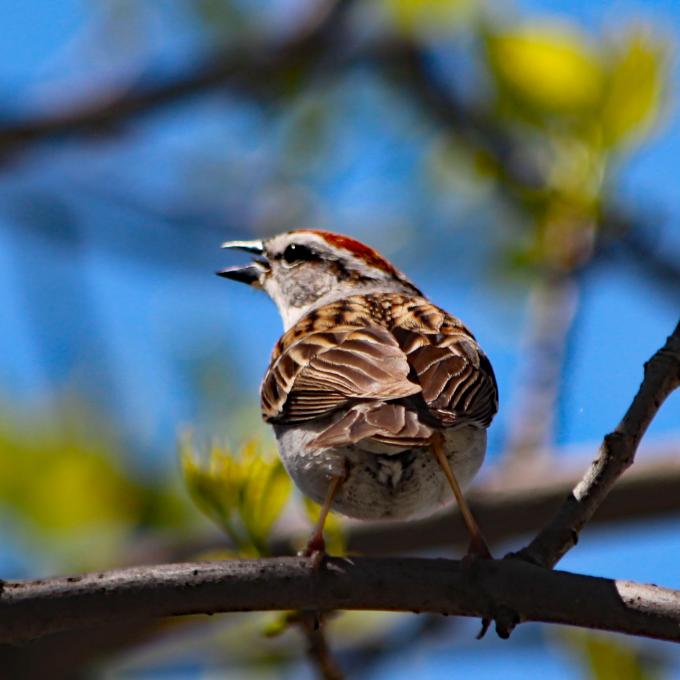 made it alittle mor</i>
made it alittle mor</i> 